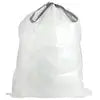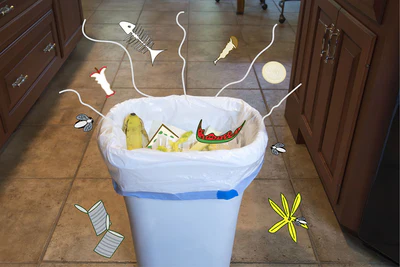Bet’cha didn’t know this one! Though Americans represent but five percent of the total world population, we somehow manage to generate a whopping thirty percent of the world’s garbage! Proud Americans have often bragged of our country’s preeminence in areas such as the arts, wealth, and humanitarian aid and can now add another claim to fame to their list; America- world leader in waste production.
These startling statistics make one wonder- what is all this stuff that Americans are throwing out? Studies indicate that Americans throw out loads of plastic and paper, as well as metal and glass, yet the surprising category that accounts for the largest portion of American waste is….. food.
Did you know that despite America’s love affair with food, as much as forty percent of all edible food in the U.S. goes uneaten, and often ends up in the trash? Studies have shown that the average American dumps as much as 20 pounds of food a month!
Harvesting and producing sufficient food for our ever growing planet is already a struggle, and is only becoming increasingly challenging with the rise of the world’s population, making food conservation all the more imperative. Food waste is a multifaceted problem, with losses taking place throughout the “farm to fork” process.
Some crops never make it off the farm, and are left unharvested because of slight blemishes that render them unusable due to the strict standards demanded by suppliers. Once harvested, food can be improperly stored or mishandled, which may cause them to spoil, rendering them useless.
On the home front, most of the wasted food is composed of fresh products. As cited by the American Department of Agriculture, a typical American discards forty percent of fresh fish, twenty three percent of eggs, and twenty percent of milk purchased. The majority of household waste is due to three main factors: overbuying, food spoilage, and “plate waste”. About 2/3 of household waste comes from food that has spoiled from not being used, while the rest is caused by people who simple cook and serve too much food.
Though the statistics seem grim, there are things we can do to reverse this food waste trend. Planning meals in advance, and shopping with a list of ingredients will help limit impulse purchases. Another option is to donate unused non-perishable and unspoiled perishable food to local food banks, soup kitchens, pantries, and shelters, which then use these items to feed the needy.
We’re all familiar with the dire plight of people living in developing countries not having adequate access to food, yet this issue is not limited to certain geographic areas, and affects many Americans as well. According to the USDA, approximately fourteen percent of American households struggle to put food on the table. By shopping, cooking, and managing our food more carefully we can help lower our “trash footprint” and help others in need too.
 4.9 out of 5
4.9 out of 5  Mix & Match: Buy any two products for 10% off!
Mix & Match: Buy any two products for 10% off!















































